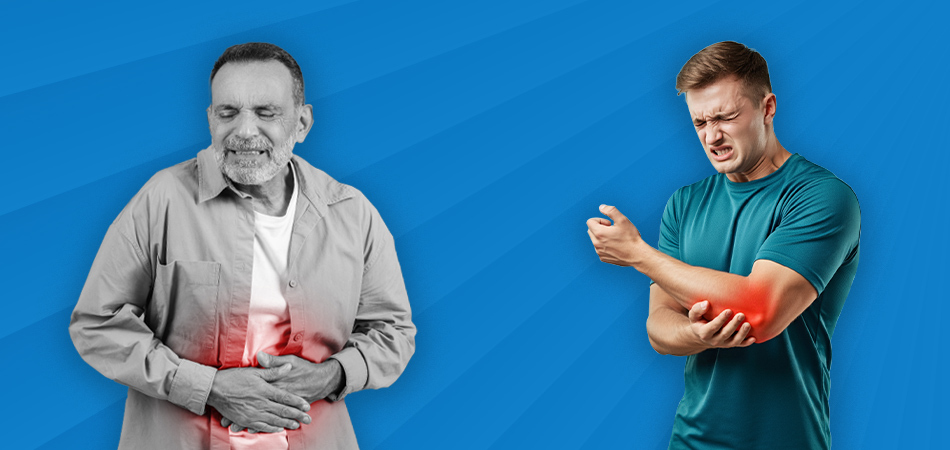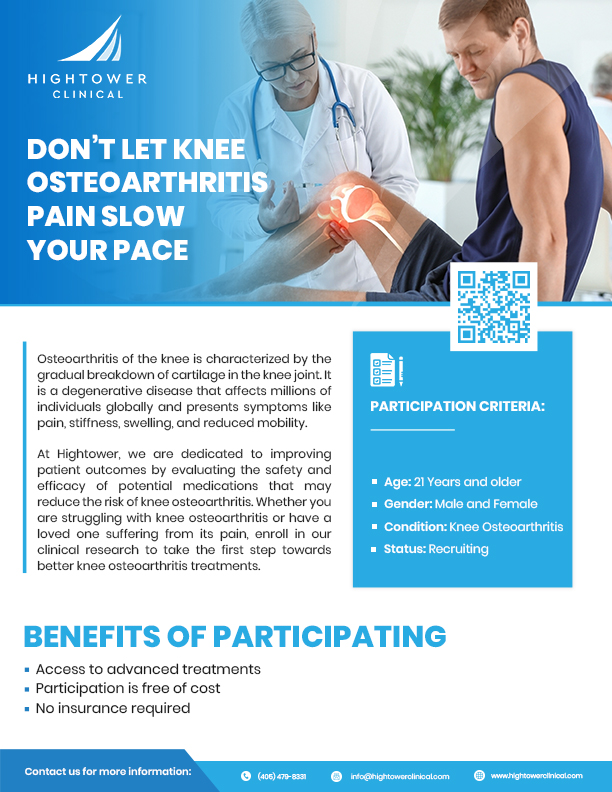Ulcerative colitis and joint pain often go hand in hand. Ulcerative colitis doesn’t just stop at the gut—it can cause painful joint issues too. This happens when the same inflammation that affects your colon also spreads to your joints, causing stiffness, swelling, and ongoing discomfort.
Introduction – Let’s Talk About More Than Just the Gut
When you think of ulcerative colitis, digestive symptoms likely come to mind. But that’s not the whole picture.
Surprisingly, ulcerative colitis and joint pain often go hand in hand. Many people living with UC don’t realize that the condition can reach far beyond the intestines. Joint pain is one of the most common issues outside the gut—and it can be just as life-altering.
In this blog, we’ll explore how and why joint pain happens in people with UC. You’ll learn about the causes, how to recognize the signs, and which treatments may offer relief.
By the end, you’ll understand more about this connection and what you can do to feel better.
Can Ulcerative Colitis Really Cause Joint Pain?
What’s the connection between gut inflammation and joint symptoms?
Yes, it really can. Ulcerative colitis doesn’t only attack your colon. It also affects other parts of your body.
In fact, ulcerative colitis and joint pain are linked through your immune system. When your immune system goes into overdrive to fight inflammation in your colon, it can mistakenly attack healthy tissues elsewhere—like your joints.
This is called an “extraintestinal manifestation.” It simply means a symptom that shows up outside of your digestive system.
How common is joint pain in UC patients?
- More than 30% of people with UC deal with joint pain. That’s nearly one in every three patients (source).
- Moreover, joint issues can vary from mild stiffness to painful swelling. Some people experience it before their digestive symptoms even begin.
- On the other hand, some patients find their joint pain flares up alongside their UC flare-ups.
- Clearly, this isn’t rare—and it’s not something to ignore. You deserve care that treats both your gut and your joints.
Ulcerative Colitis and Arthritis: What You Need to Know
Ulcerative colitis doesn’t just cause random joint aches—it can trigger certain types of arthritis. Knowing which one’s matter helps.
What types of arthritis are linked with UC?
- First, peripheral arthritis affects the arms, legs, knees, and ankles. It usually follows gut flares and improves as UC settles.
- Second, axial arthritis targets the lower spine and hips. Unlike peripheral arthritis, it may last even during remission.
What’s the difference between UC joint pain and regular arthritis?
- UC-related joint pain tends to move around. It often doesn’t damage joints like traditional arthritis does.
- However, it can still be very painful. Unlike other arthritis types, it may fade as UC gets better.
- Still, it’s easy to confuse UC-related arthritis with other joint problems. Doctors sometimes misdiagnose it as rheumatoid arthritis.
- So, always share your full symptom history. Early understanding can prevent wrong treatments and long delays.
Joint Pain During a Flare-Up vs. Remission
Joint pain in UC isn’t always steady. It can feel different during flares and remissions.
Why does joint pain seem worse during flares?
- During a flare, your immune system gets more active. That extra inflammation can spread to your joints.
- As a result, pain often increases. Stiffness and swelling may grow worse during those gut flare-ups.
Can you still have pain in remission?
- Yes, you can. Some people feel joint pain even when their gut feels fine.
- That’s because UC can cause long-term joint changes. Pain may stay even after gut inflammation fades.
- Also, some types of UC-related arthritis don’t follow flare patterns. They can act on their own.
- Because of that, you need a long-term plan—not just flare-up relief.
- Talk to your doctor about managing joint pain across all stages of UC. That way, you can stay active, even when your gut feels calm.
Symptoms to Watch For (and When to Call a doctor)
Joint pain linked to UC often starts small. But it can grow and affect daily activities over time.
Which joints are most often affected?
- Most often, people feel pain in their knees, ankles, wrists, and lower back.
- You might also notice stiff fingers or swelling in your joints, especially in the morning.
When should you take joint pain seriously?
- If you feel joint pain along with fatigue or low-grade fever, take note.
- Also, if the pain doesn’t go away or keeps you from moving around, don’t wait.
- Call your doctor if joint pain affects your work, sleep, or mood.
- Importantly, speak to your gastroenterologist about these symptoms. They can guide you or refer you to the right specialist.
Treatment Options for Ulcerative Colitis and Joint Pain
Treating both UC and joint pain takes teamwork. You may need help from more than one doctor.
Are gut meds enough to treat joint issues?
- Sometimes, yes. Gut medicines like biologics or corticosteroids can ease both bowel and joint symptoms.
- However, not all joint pain responds to gut-focused treatment. In those cases, you need more support.
When do you need a rheumatologist involved?
- If your joint pain sticks around during remission, a rheumatologist should step in.
- They can check for other types of arthritis and help find the right medicine for your joints.
Joint pain with ulcerative colitis? Explore Clinical Trials
More than 1 in 3 people with Ulcerative Colitis also experience joint pain.
Ulcerative colitis can go beyond the gut—causing pain, stiffness, and swelling in your joints. That’s because the same immune response targeting your colon can also affect your joints.
However, if you are going through this condition always keep track of your symptoms. Talk to your doctor as soon as the pain starts, explore full-body care, and ask about clinical research.
Treatment choices and caution points
- Doctors may suggest NSAIDs for pain, but these can upset your gut. So, use them carefully.
- Biologics and corticosteroids often work better, as they target inflammation at its source.
- Also, working with both a GI doctor and a rheumatologist brings better results. Together, they create a full treatment plan.
- Finally, some patients join clinical trials to explore new treatment options for inflammatory bowel disease. Ask your doctor if this fits your case.
Lifestyle Tips to Help You Move More Comfortably
Managing joint pain doesn’t stop with medicine. Simple lifestyle changes can make a real difference.
What helps beyond medicine?
- First, stay active—but go easy. Try low-impact exercises like walking, yoga, or gentle stretching each day.
- Next, eat foods that lower inflammation. Choose leafy greens, berries, olive oil, and fish rich in omega-3s.
- Also, stay hydrated. Water helps your joints work better and keeps your body moving smoothly.
- Then, make time for rest. Good sleep gives your body time to repair inflammation.
- Finally, try heat or cold therapy. Warm packs relax stiff joints, while ice can calm swelling.
- These small steps may seem basic, but they work. When used daily, they support your treatment and improve comfort.
How Clinical Research Is Helping Patients with Ulcerative Colitis and Joint Pain
Clinical research plays a big role in finding better treatments. That includes ways to ease joint pain too.
Why does research matter for joint pain relief?
- Many trials now focus on extra symptoms like joint issues, not just gut problems. That’s good news.
- Hightower Clinical Research helps lead some of these studies. They look into new biologics and small molecules.
- Also, they explore how these treatments help both gut and joint inflammation.
- Some trials test new ways to manage daily symptoms, including stiffness and fatigue.
- You could help move this research forward. By joining a trial, you give real insight into what works.
- Talk to your doctor to learn more. You might be a good fit for a study near you.
Conclusion: Managing UC Joint Pain Takes More Than Gut Treatment
Ulcerative colitis doesn’t just affect the gut—sometimes, joint pain can become the more disruptive issue. If joint pain is holding you back, start by tracking your symptoms: note when the pain starts, how long it lasts, and what provides relief. Early conversations with your doctor are key, as you may need a treatment plan that goes beyond gut health. Often, a full-body approach that includes both gastrointestinal and joint care delivers the best results.





